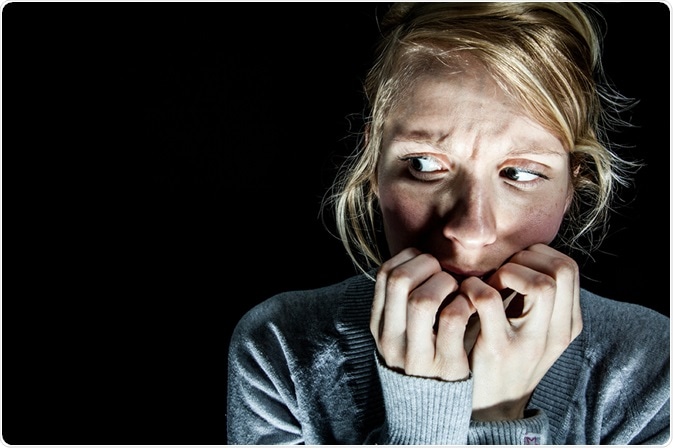Phobias are irrational and abnormal fears of common and not so common objects, animals, situations, and activities. Most sufferers are usually fully aware that they have a phobia and try to avoid their feared object as much as possible.
These people may live with a phobia without having it formally diagnosed and treated. This may, in severe cases, hamper and interfere with their daily living.

Types of phobias
Phobias are broadly classed as simple (specific) phobias and complex phobias. Specific phobias include fears of animals, insects, birds, reptiles, activities like flying, situations like closed spaces, etc. Complex phobias include social phobia and agoraphobia.
Diagnosis of phobias is made in accordance with the guidelines laid down by the diagnostic and statistical manual (Text revision) of the American Psychiatrists Association, known as DSM-IV-TR.
The conditions are listed in the World Health Organization's International Classification of Diseases (ICD-10) as well.
Specific phobia diagnosis
According to the DSM IV TR criteria, specific phobia diagnosis includes questions like presence of marked and persistent fear that is excessive or unreasonable, cued by the presence or anticipation of a specific object or situation.
There should be an immediate anxiety reaction, which might reach the severity threshold of a panic attack on exposure to the feared object or situation.
In children, there might be crying, tantrums, freezing or clinging in response to a similar exposure. The patient realizes that the anxiety is excessive or unreasonable. This latter may be absent in children.
The situations or objects are avoided or endured with intense anxiety or distress. This avoidance or endurance with distress interferes significantly with the person’s normal routine, academic functioning, or social activities or relationships.
Diagnosis of agoraphobia
This is an anxiety disorder that occurs in individuals who fear open spaces. The commonly asked questions include if the person avoids certain situations because they fear a panic attack.
Another question is whether a panic attack has been triggered, especially over the last 6 months by:
going away or out of their homes
standing in long queues
being in a tunnel or underground space
home alone
being in wide open spaces such as a field
being in crowded places
Patients are asked if they do all they can to avoid such situations. These may be diagnostic of agoraphobia.
Diagnosis of social phobia
Social phobia diagnosis includes a list of questions to help people identify their fear. This includes worries about what people might think of them and feels anxious in social situations if the person fears embarrassing themselves before others.
The patient is asked if he is scared of public speaking, eating, drinking and writing in front of other people or going to parties and other social gatherings.
If a person has been avoiding any such situations consistently for the past six months or more, a social phobia may be diagnosed.
Ruling out alternative diagnoses
Other mental health conditions need to be ruled out before phobias are diagnosed. This includes ruling out depression, obsessions, delusions, unnatural fears, or hallucinations that may signify deeper diseases like Schizophrenia, paranoia, etc.
For example, social and agoraphobias also need to be distinguished from simple or specific phobias like fear of men (androphobia) or women (gynophobia).
They need to be differentiated from panic disorders, Separation anxiety disorder, General anxiety disorder, Schizoid personality disorder, Asperger’s syndrome and autism, Avoidant personality disorder, etc. (1-4)
Sources
- http://www.nhs.uk/Conditions/Phobias/Pages/Diagnosis.aspx
- http://www.patient.co.uk/doctor/Social-Anxiety/Phobia.htm
- http://www.drbeckham.com/handouts/CHAP12_COPING_WITH_PHOBIAS.pdf
- www.springer.com/…/9781441977823-c2.pdf
Further Reading
- All Phobia Content
- What is a Phobia?
- Causes of Phobias
- Types of Phobias
- Treatment of Phobias
Last Updated: Jan 20, 2021

Written by
Dr. Ananya Mandal
Dr. Ananya Mandal is a doctor by profession, lecturer by vocation and a medical writer by passion. She specialized in Clinical Pharmacology after her bachelor's (MBBS). For her, health communication is not just writing complicated reviews for professionals but making medical knowledge understandable and available to the general public as well.
Source: Read Full Article
